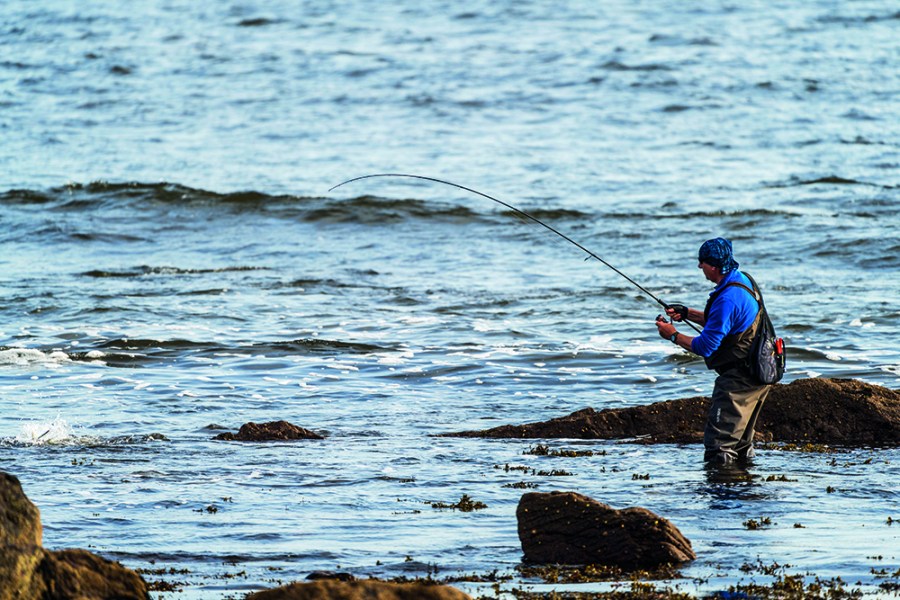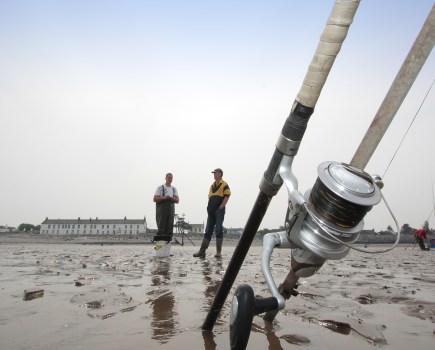I wish I could take you all to the first proper, shallow reefy mark where I began to cut my teeth on lure fishing for bass; it would perfectly illustrate all that I am going to talk about here.
Thanks to a very kind, and incredibly skillful, UK angler who was living in south east Ireland and invited me over for some fishing, I soon fell into a complete lure fishing addiction! I would love to show you where this lad and I first started fishing together because the whole location was full of such valuable lessons which only became fully apparent to me as I started slowly getting to grips with fishing lures for bass.
One of the things I quickly learnt was that on a typical bass mark – for most anglers I think I can assume will more than likely be shallow, reefy or at least broken ground – there were in fact a number of sections of the mark where I couldn’t actually fish. It looked like I wanted to fish these spots as I started to learn about where bass tended to be, but the simple fact was that I didn’t know enough about bass lures yet, and as such I didn’t have any lures which would swim shallow enough to enable me to cover more of the shallow ground and not keep snagging up and costing me a fortune.
I don’t mind admitting that there was a point where I nearly walked away from bass lure fishing because I was losing too many expensive hard lures. It wasn’t the fault of the lures I might add, rather it was my lack of knowledge and not understanding enough about swimming-depths and what certain lures are designed to do or not do. Things have come on a lot with modern lure fishing, but even back then there was a fairly extensive family of hard lures which were designed to cover the sort of ground I was learning to avoid because of expensive lure losses. I just didn’t know this yet.
Let’s call these lures ‘ultra-shallow divers’, or perhaps ‘shallow runners’ or something like that. When I started really getting into lure fishing for bass I ended up almost stumbling across these types of lures as a few forward-thinking UK importers started bringing them into the country. Back then it was mostly Japanese (sea) bass lures which were designed to fish how we needed.
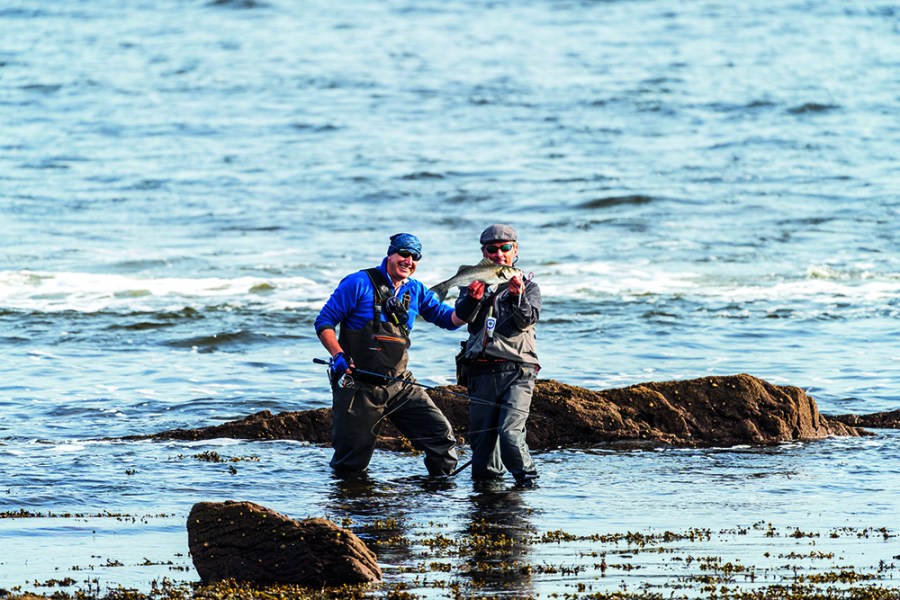
I remember that first IMA Komomo SF-125 lure I bought in the cotton candy colour so well, because it hammered bass for me in parts of these marks I couldn’t previously fish properly. Things are very different now with far more tackle companies from all over the place getting involved with lures like these, but for the most part the ideas originate from Japan and not somewhere like the USA where, in fact, there isn’t much call for our typical bass size lures which cast a long way and swim very shallow. What you will find is that most of the modern hard lures which are designed to cast far and swim very shallow often don’t have what we might think of as a traditional bib or diving vane. You know that front diving type “vane” or bib on the front of a lure like the deadly IMA Hound 125F Glide? It’s designed to swim the lure a touch deeper, and the lures which I think of as ultra-shallow for the most part have what I think of as a “cut-face”. Look at something like the IMA Komomo SF-125 which was the first proper ultra-shallow diver I ever came across and bought; the face of the lure is almost “cut” if that makes sense. This allows for the lure to swim much shallower which, in the right areas, can be so useful.
These are not hard and fast rules because it depends on the lure designer and what they have managed to do, but mostly you will find that bibs or diving vanes on the front of hard lures mean that they will swim at depths I would not be calling ultra-shallow. For ease of use let’s think of ultra-shallow hard lures as lures which swim from literally just below the surface to say 30cm deep. Now think about a lot of the ground you fish for bass and you will understand why lures like these are so important to so many bass anglers. We need to be putting our lures where the fish are most likely to be.
TECHNIQUE TIPS
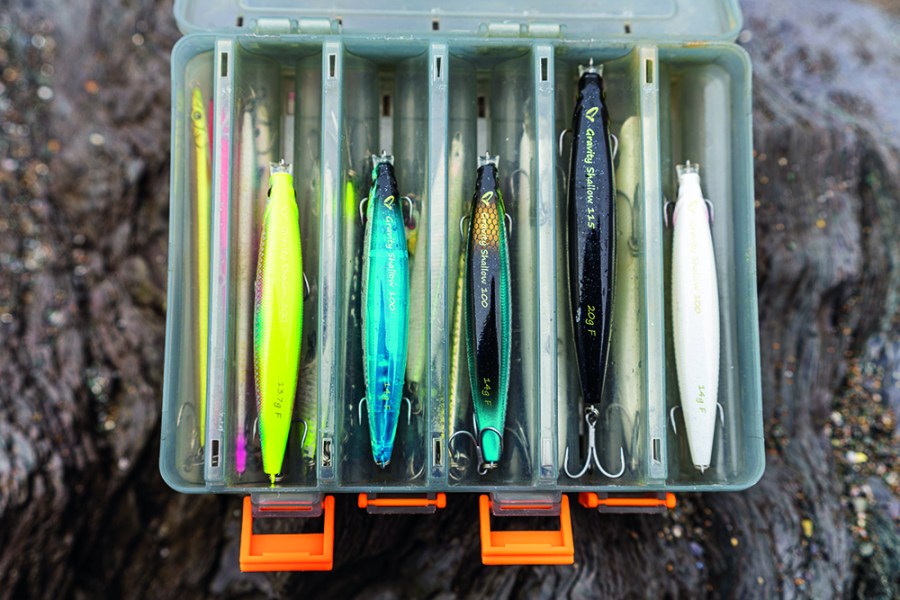
For the most part I am going to do nothing more with these ultra-shallow divers than whack them out and wind them in. I don’t believe they really need much twitching. In fact, I am usually buying specific lures because of the action (and sometimes lack of obvious action) they impart via a simple straight retrieve. I found out pretty quickly that you can directly influence how deep most hard lures will swim – fish with your rod tip at say 45 degrees to “force” the head of the lure up a bit more if need be. Slowing down your retrieve will also bring the lure up a touch shallower, and a lot of these ultra-shallow divers will actually swim with a bit more front action when you fish with the rod tip up especially. Extra wiggle. ere will usually be a sort of sweet spot where you can feel the lure doing a bit more in the water. Whatever the case, don’t ever forget that you can very easily “whack and crank” most of these modern hard lures and they will be fishing away perfectly. The trick as ever is to be in the right place at the right time, indeed this to me is almost the whole crux of bass fishing.
About the only negative thing I can point out about this family of hard lures is the fact that, because they are designed to swim right towards the top of the water column, if the sea is fairly bouncy then this makes the lures less stable and it can get knocked about and sometimes not swim entirely true. A deeper diving lure grips that bit better partly because it swims further below a lot of the turbulence, but of course we are after lures which swim really shallow. This lack of stability in rougher water is not a weakness, rather it’s a matter of the angler needing to understand more about matching the choice of lure to the ground and the conditions.
HENRY’S AWESOME EIGHT SHALLOW RUNNERS
Here are a selection of eight ultrashallow diving hard lures which I have fished with a lot and really rate:
IMA Komomo SF-125
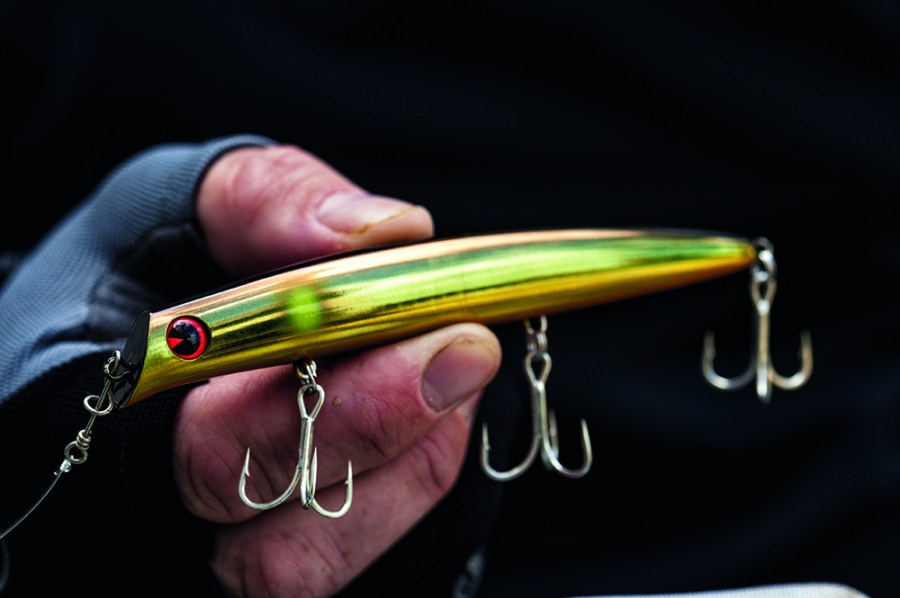
The first ultrashallow diving hard lure I came across, and I have loved it ever since. Casts really well and swims very shallow. A great range of colours as well. I particularly like the cotton candy colour in brighter conditions. I love fishing this lure with my rod tip up.
Tackle House Feed Shallow 128
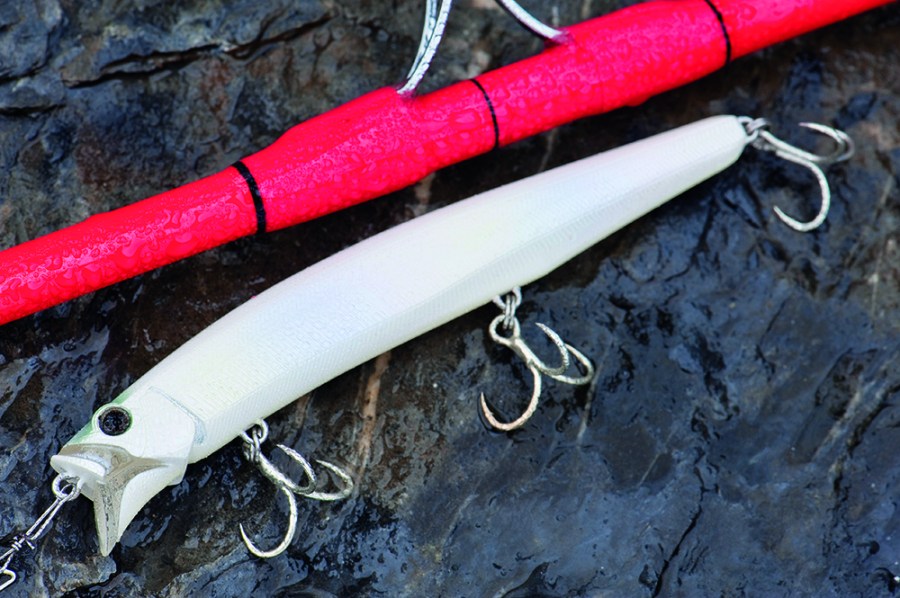
A lot of big bass have been caught on this lure. It isn’t the best casting lure in the world but if you catch it right it gets out there well enough. You can slow down and swim this lure so shallow, and bass absolutely love it. I don’t personally like the treble hooks very much which come rigged on the lure so I change them to better quality versions.
Tackle House Feed Shallow 128 – A lot of big bass have been caught on this lure. It isn’t the best casting lure in the world but if you catch it right it gets out there well enough. You can slow down and swim this lure so shallow, and bass absolutely love it. I don’t personally like the treble hooks very much which come rigged on the lure so I change them to better quality versions.
Savage Gear Gravity Shallow 10cm and 11.5cm
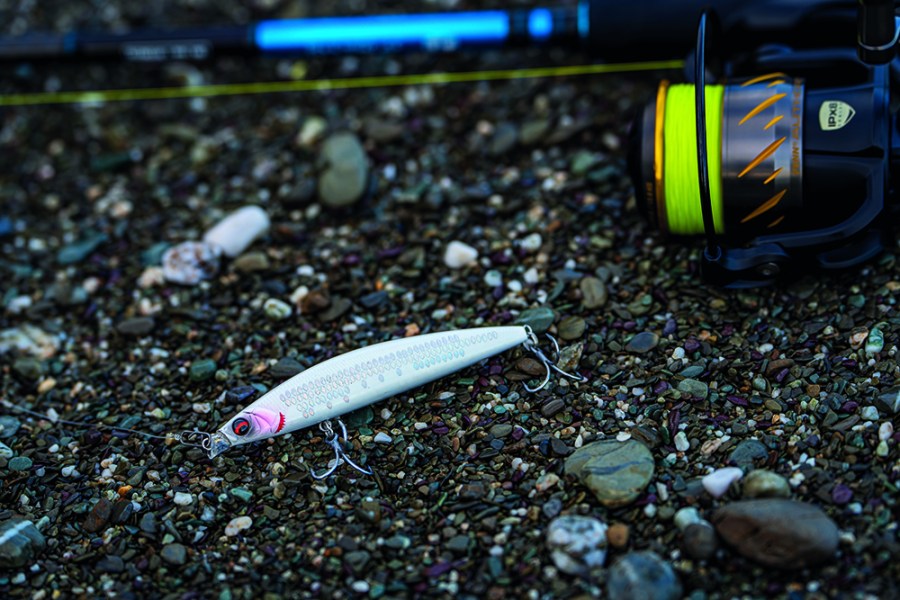
A couple of very modern hard lures. Very long-casting and the higher sides to the lure body really helps with stability in some surprisingly turbulent water. Great treble hooks, a fantastic selection of colours, I love the subtle action on these lures.
IMA Komomo II

One of the shallowest-diving hard lures I know of. It works the best if you slow down so the lure wiggles very enticingly just sub-surface. A lot of anglers have also done very well with this lure in the dark. Don’t be tempted to wind this lure fast; that to me is the trick here.
IMA iBorn 98F Shallow
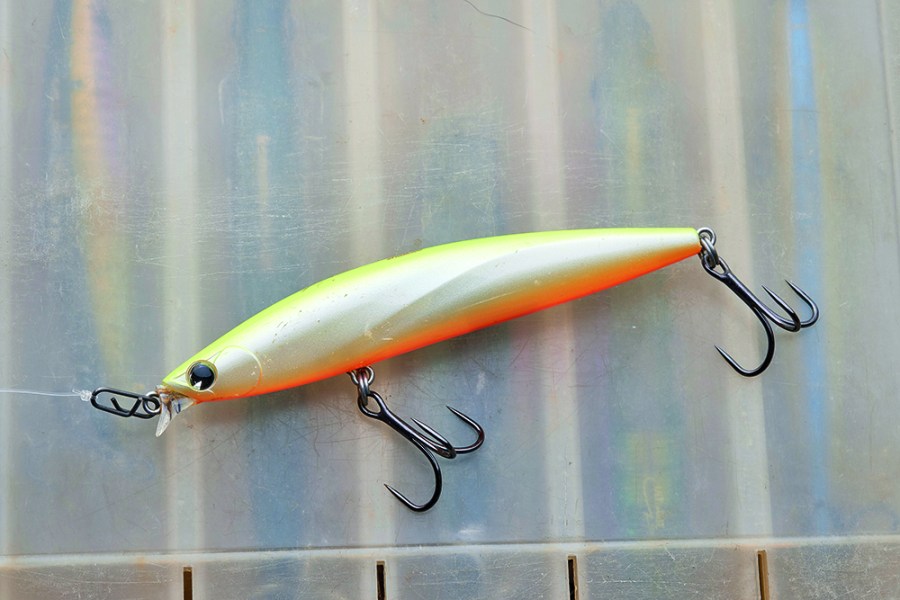
Another personal favourite. I really like smaller hard lures a lot of the time. It casts very well, swims lovely and shallow and the subtle action is perfect, IMA makes so many good hard lures.
Duel Hardcore Lipless Minnow 120F
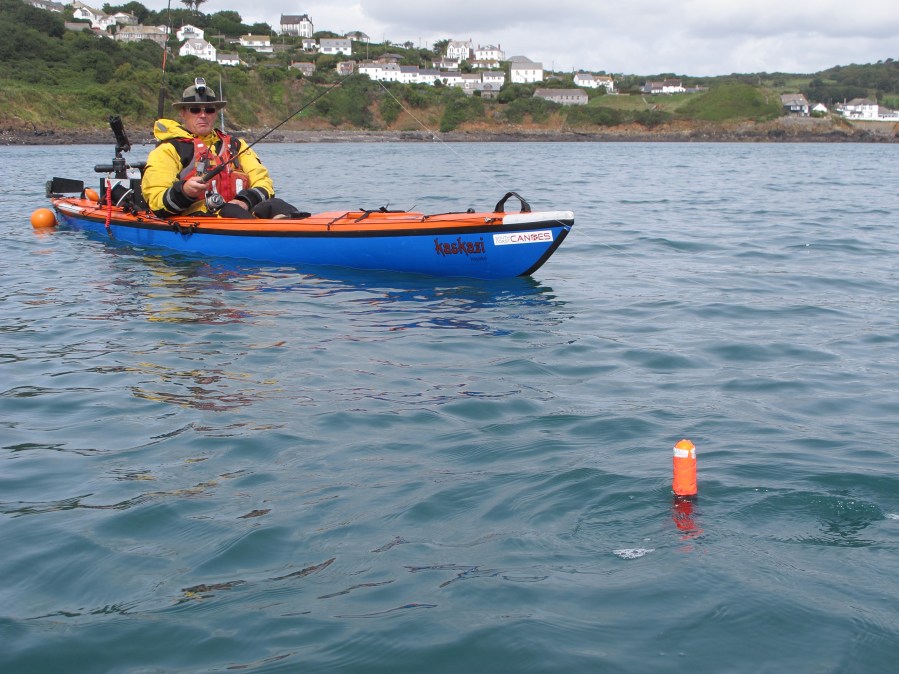
This can be hard to track down, but if you can it’s worth it. I absolutely love this lure and it’s caught me plenty of good bass. Very long-casting, a great shallow-swimming action, I love the range of colours. This to me is a great example of a classic ultra-shallow diver.
Savage Gear Sandeel Pencil 90, 125 and 150:
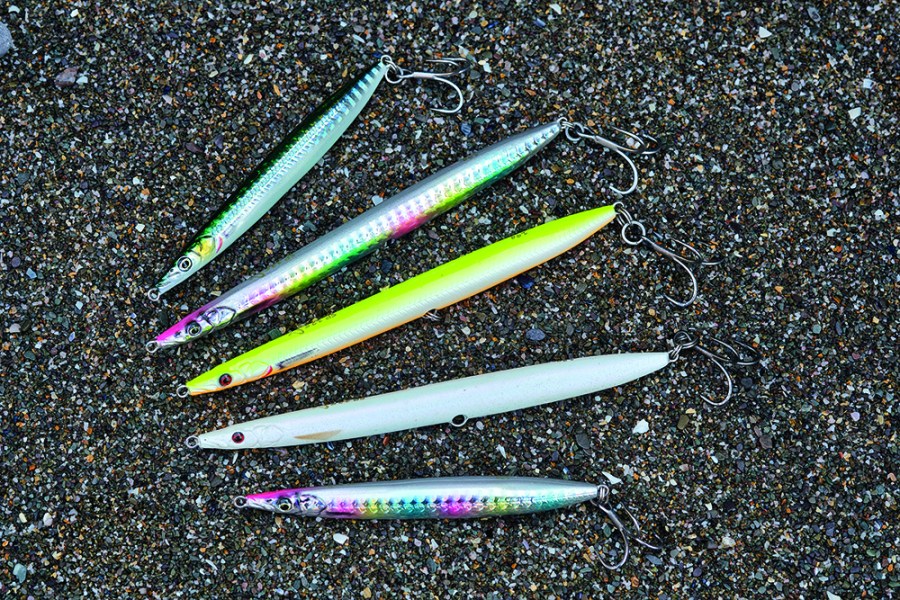
A bit of a cheat because these are not really conventional ultra-shallow diving hard lures, but they cast a mile and swim very shallow with a very subtle action – and they are absolutely deadly for bass if you can accept the subtle action when compared to the other lures I have talked about here.
BlueBlue Aizer 125F
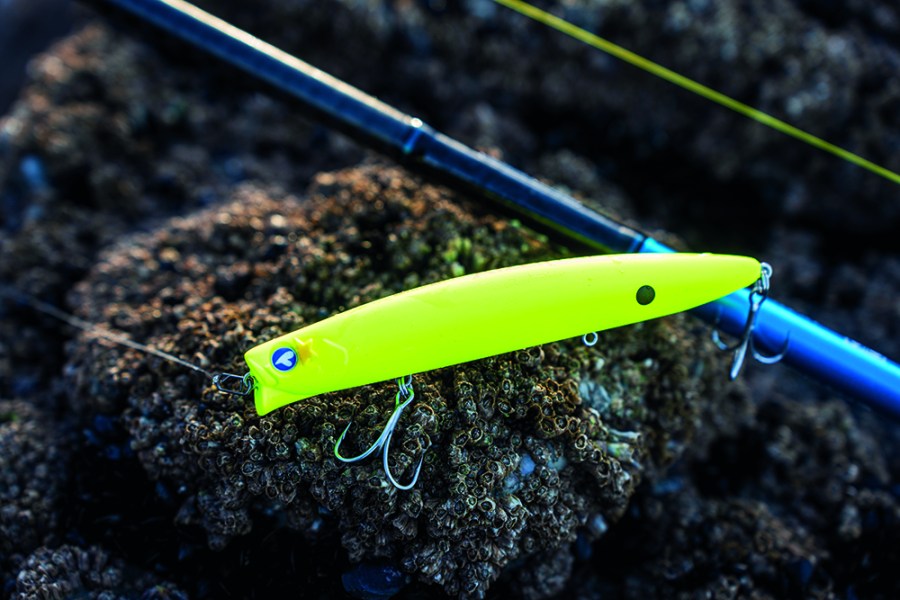
Fairly new to me but I love how this lure casts so well and swims so shallow with a very strong action and great treble hook. It reminds me a bit of a more modern Tackle House Feed Shallow.

